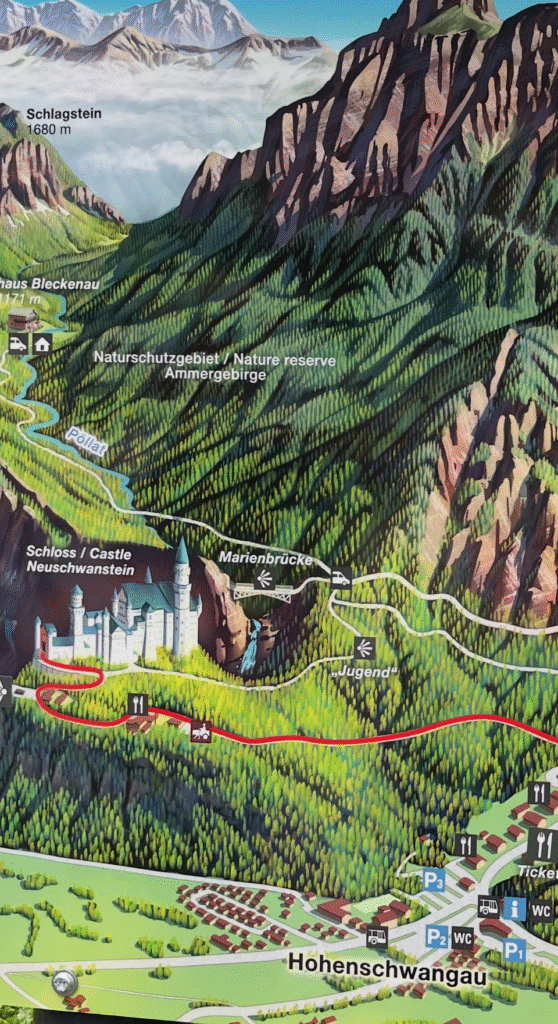


Neuschwanstein Castle is one of the most famous landmarks in Bavaria, Germany, and was built in the late 19th century by King Ludwig II of Bavaria. Designed as a romantic medieval getaway, the castle was inspired by medieval legends and myths, as well as the operas of Richard Wagner, whom Ludwig admired.
Built into a dramatic mountain setting, the castle resembles a fantasy world, reflecting Ludwig’s dreamlike architectural vision. The design blends Romanesque, Gothic, and Byzantine architectural elements to create a fairytale-like appearance. Although it was never fully completed after Ludwig’s mysterious death in 1886, Neuschwanstein has become one of the most visited castles in the world, attracting millions of tourists each year.
The name Neuschwanstein Castle comes from Schwanstein Castle (now Hohenschwangau Castle) in the village of Hohenschwangau, where King Ludwig II of Bavaria lived as a child.
After his death, it was renamed “Neuschwanstein”, meaning “New Swan Stone”. The name reflects Ludwig’s love of swans, a symbol of purity, and its connection to Lohengrin, the Swan Knight in Wagner’s opera. Ludwig was an admirer of composer Richard Wagner, whose work greatly influenced the castle’s design and themes.
King Ludwig II of Bavaria was a politically isolated monarch from 1864 to 1886 who prioritized art and architecture over governance. A visionary and patron of the arts, he built Neuschwanstein, Linderhof, and Herrenchiemsee as lavish retreats inspired by medieval legends and themes from Richard Wagner’s operas. His lavish castle construction projects led to financial difficulties and political tensions. In 1886, he was diagnosed with mental illness without proper testing. Some say this diagnosis was politically motivated to remove him from power. He was deemed unfit to rule, removed from power, and his uncle, Prince Luitpold, became regent. Shortly afterwards, he was found dead in Lake Starnberg.


コメント